Diversity Agents
Archive
Creating an archive
This chapter describes the archiving for the module DiversityAgents, but is valid correspondingly in other modules
The data related to a project can be exported into an archive. Choose
Data - 

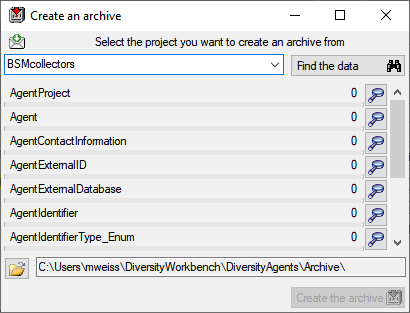
Select the project you want to create an archive of and click on the
Find the data 



You can include the log data by selecting the 

Resetting the database
Before you restore an archive, please make sure that the data from the
archive do not interfere with the data in the database. In order to
avoid problems you should clean the database from any user data. To
clear the database from any user data, choose Data -



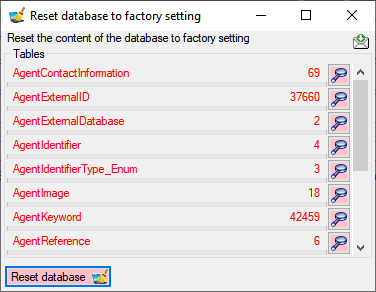
Restoring an archive
To restore an archive choose Data - 



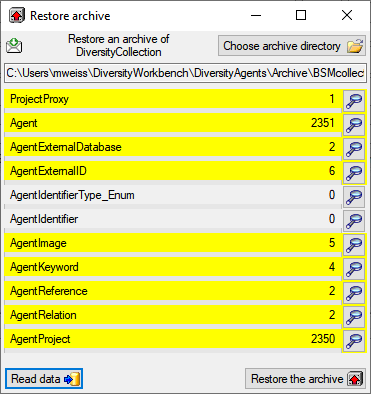
With a click on the 


You can include the log data by selecting the 

Planing
Plan schedule based archive creation
To administrate the schedule based creation of archives choose Data -



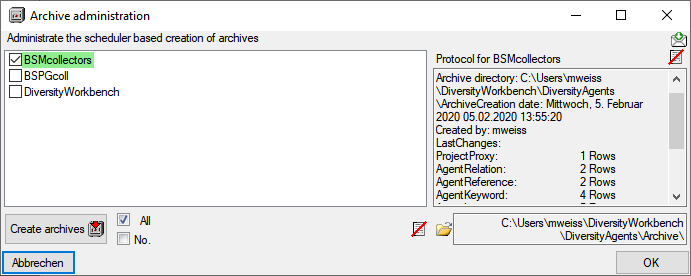
Creation of xsd schemata
Next to the data, the archive files contain a xsd description of the tables. To create xsd schemata independent of the content, select Data - Archive - Create schema from the menu. A windows as shown below will open with the list of all tables where the main tables of the database are preselected.
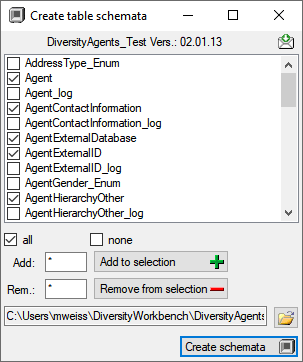
To change this selection you may use the 
 none buttons resp. the Add to
selection
none buttons resp. the Add to
selection 



Creation of archives as a backgroud process
To archive the data in a scheduler based background process, you can start the application with the following arguments:
- Archive
- Server of the SQL-server database
- Port of SQL-server
- Database with the source data
- Optional: Directory where the archive directories should be created
C:\DiversityWorkbench\DiversityAgents> DiversityAgents.exe Archive snsb.diversityworkbench.de 5432 DiversityAgents C:\DiversityWorkbench\DiversityAgents\Archive
The application will create the archives, generate the protocols as described above and quit automatically after the job is done. The user starting the process needs a Windows authentication with access to the SQL-Server database and proper rights to archive the data. If the last argument is not given the default directory …\Application directory\Archive\ will be used.